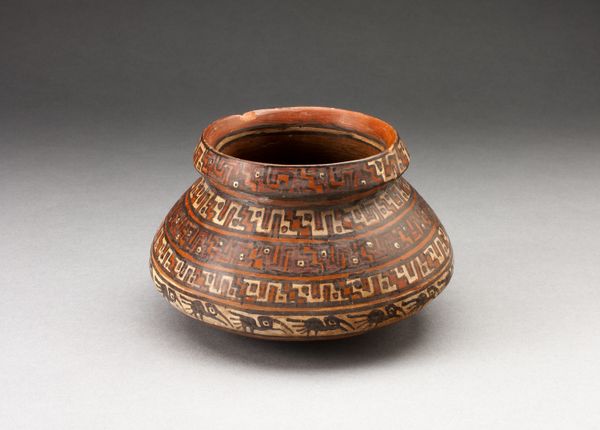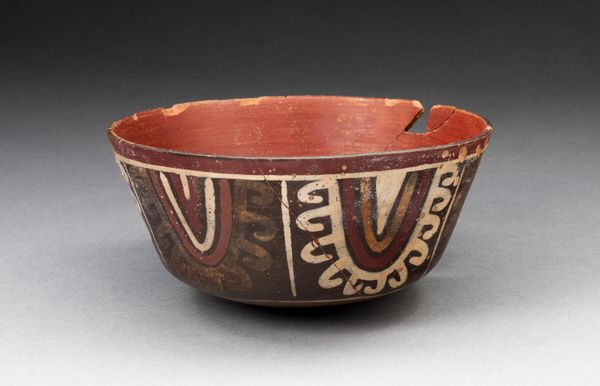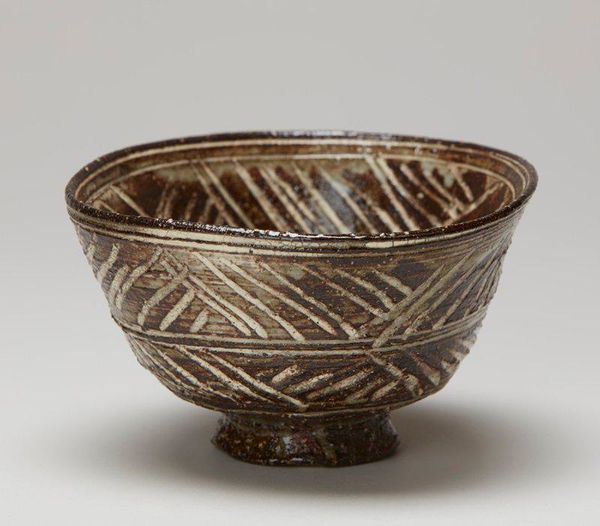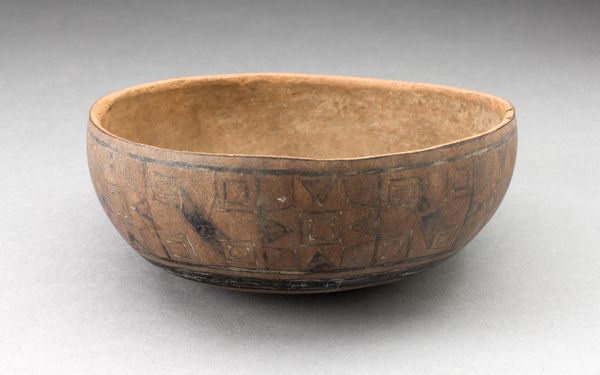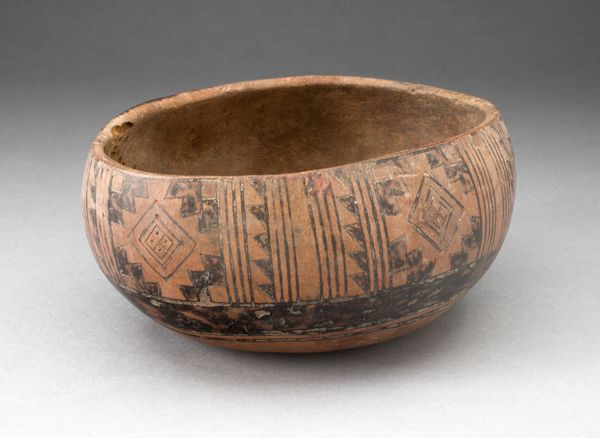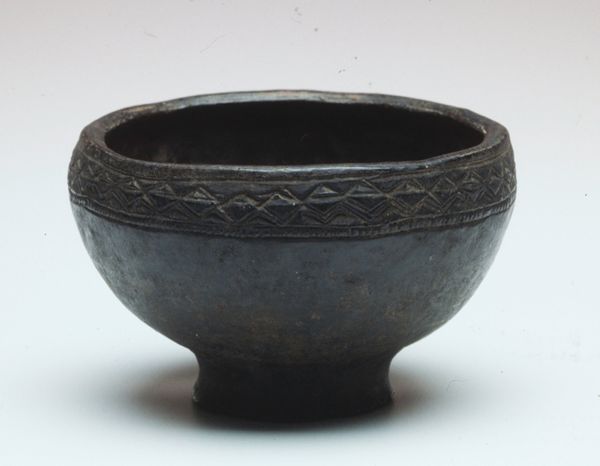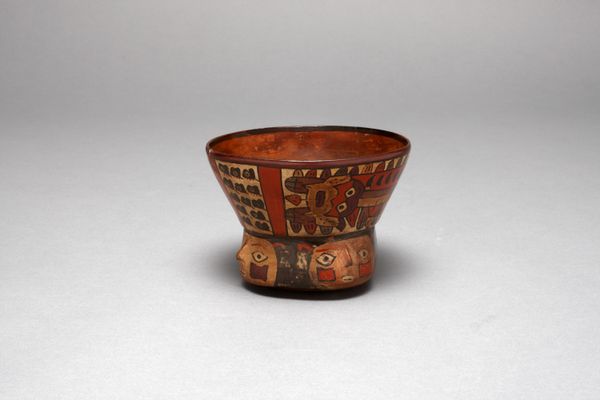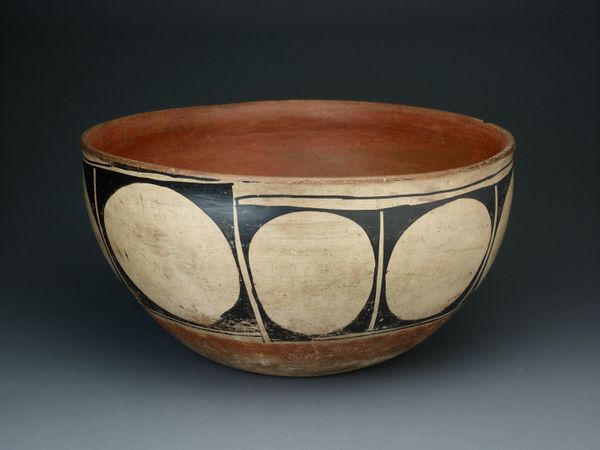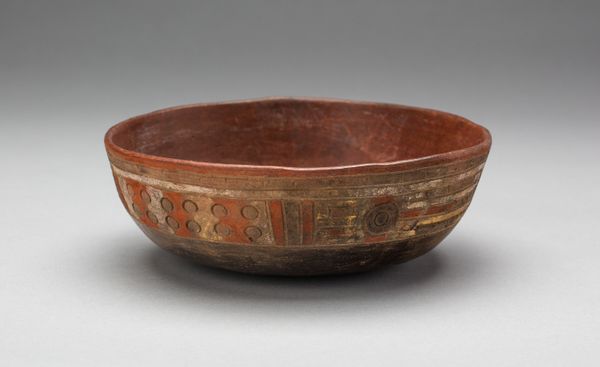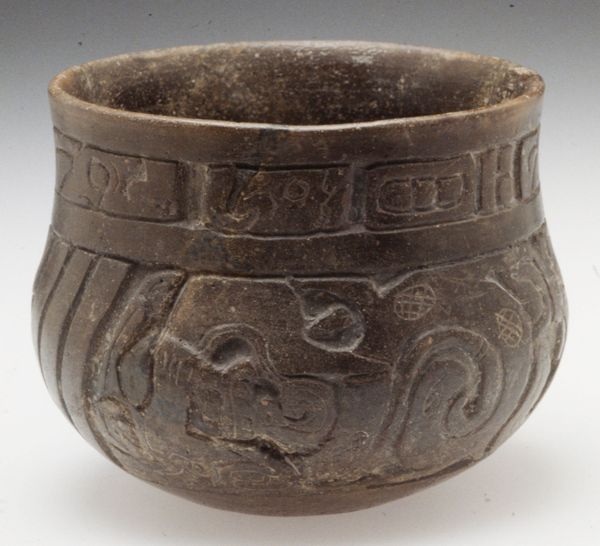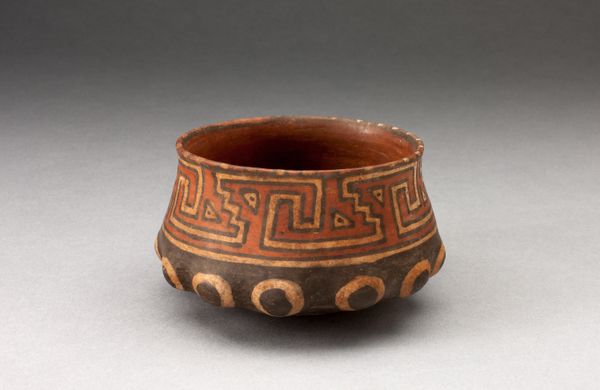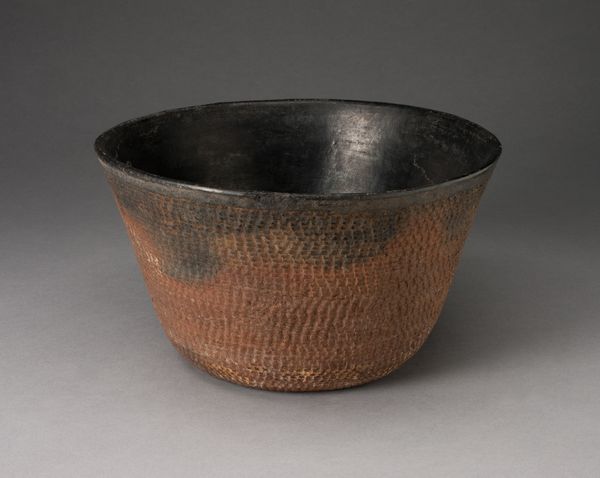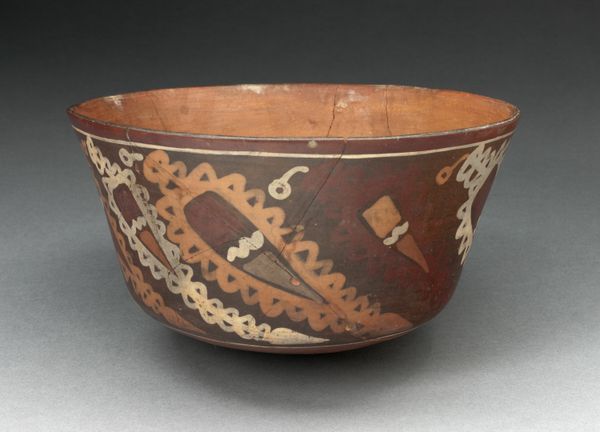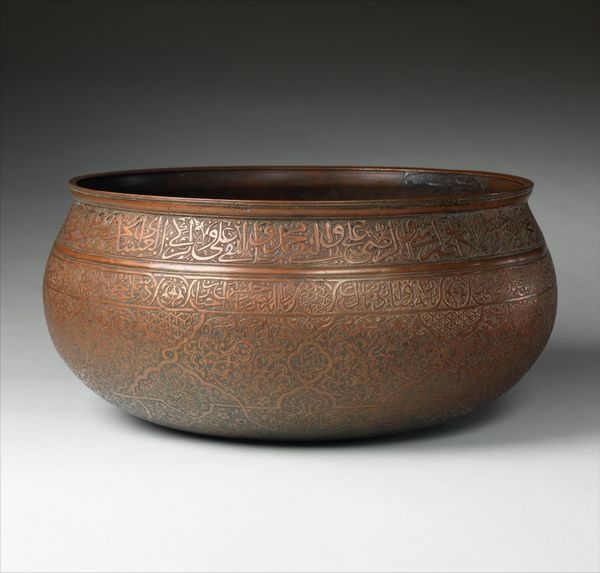
carving, sculpture, wood
#
carving
#
sculpture
#
geometric
#
sculpture
#
wood
#
yoruba-art
Dimensions: 40.64 x 81.28 cm
Copyright: Public domain
Editor: Here we have a wooden carving called "Bowl" by Olowe of Ise. It’s intricately sculpted, and the geometric patterns give it such a striking and formal presence. What do you see in this piece beyond just the aesthetics? Curator: Well, viewing this through a historical lens, the first thing that grabs me is how Olowe’s work disrupts traditional power dynamics within Yoruba art. Consider how this bowl, seemingly a utilitarian object, becomes elevated through its detailed carvings and its implied connection to elite patronage. Do you notice the visual storytelling happening here? Editor: You mean the carved patterns? I guess I hadn't really thought about them as narratives. I was mostly taken by the bowl’s physical form. Curator: Exactly. The patterns likely encode social and religious narratives specific to the Yoruba culture. Art objects like these often reinforced social hierarchies but also offered a means of subtly commenting on them. This bowl prompts us to think about how art served as both a tool for social cohesion and, potentially, subtle negotiation. Who do you think might have commissioned a piece like this? Editor: I would assume someone fairly wealthy. If it's hand carved out of wood, it probably took someone a good amount of time to make! Curator: Indeed. And placing this in a contemporary museum setting, what statements does the bowl make when extracted from its original location? Does its meaning change, or remain static? Editor: Wow, I didn’t realize one piece could have so much going on. It makes me see these objects in a whole new light, understanding their active role in culture and power. Curator: And understanding how museums shape our engagement with art as a reflection of ourselves and human experience, isn’t it?
Comments
No comments
Be the first to comment and join the conversation on the ultimate creative platform.
